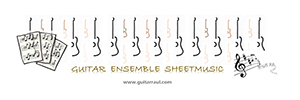Daniel Gil de Avalle / Enca González / Robert Mores
http://www.centrodedocumentacionmusicaldeandalucia.es/ojs/index.php/mos/issue/view/16
Gil de Avalle, D., & González, E. (2019). Estudio de las guitarras Torres – Parte I: innovación y evolución en el contexto del siglo XIX. Música Oral Del Sur, (16),
The current Spanish guitar –both, classical and flamenco- is, perhaps, the instrument that most has evolved throughout history, as well as the most popular one. With this abstract we mainly intend to make a brief summary of its acoustic evolution, but, for this, it is important to make a brief introduction to its history and its organological evolution, from the Renaissance and Moorish vihuela, the baroque guitar and the 12-string guitar of the end of the 18th century and the beginning of the 19th, to the early romantic guitar until the consolidation of the modern and vintage guitar during the second half of the 19th century and the 20th century, thanks to the transcendence of the parameters of the most international guitar constructor: Antonio de Torres Jurado. Since Antonio de Torres little has changed, only the plantilla that, in the second half of the 19th century increased slightly in search of more volume and its mode of construction, that went from being an individual artisan work to an artisan work on an assembly line and later industrially manufactured. In the 21st century, contemporary guitars, historical guitars and guitar reproductions coexist as well as the industrial production together with small artisan zones that have remained and are beginning to be recovered: this is the case of Granada. It was the constructors of the late 18th century who began to introduce innovations; builders like the Pages family established in Cadiz who used fan strutting system inside (Andalusian construction style) or the Muñoa family in Madrid, who raised the fret board and improved the bridge, as they were asked by guitarists, searching to give the guitar the category of a soloist instrument like the piano or the violin.
Part I: innovation and evolution in the context of the 19th century & Studying Torres guitars
Mores, R. (2019). Estudiando las guitarras Torres – Parte II: acústica en el camino a la guitarra moderna. Música Oral Del Sur, (16), 147–169.
Antonio de Torres is celebrated to have introduced the shape and definition of the modern guitar that we find today. Andalusian and other guitar makers still continue to manufacture Torres models besides their own models of classical Spanish guitars and flamenco guitars. This paper seeks to document and explore some of the basic tuning concepts behind the investigated examples of Torres guitars, in the context of other epochs of guitar making, including modern guitars. For this purpose some 23 excellent master pieces from six different collections have been measured acoustically. The development of the guitars’ sizes and shapes and their relation to basic acoustical properties is outlined, and further acoustical properties such as bass support, sound pressure, and timbre are investigated for the five Torres guitars under observation. The feature maps of these acoustical properties clearly support classification of different epochs of guitar making, one of which is the work of Torres.





